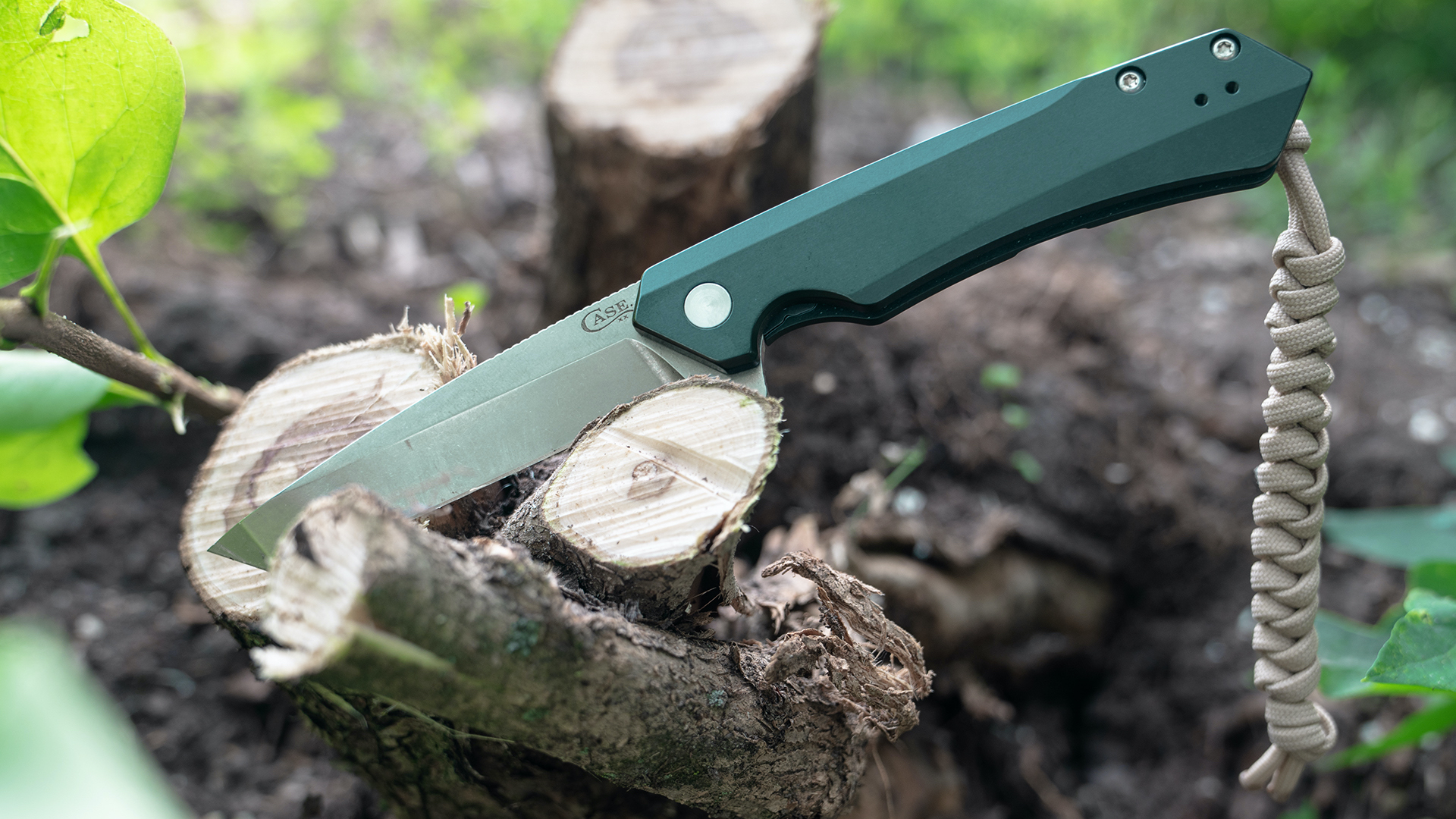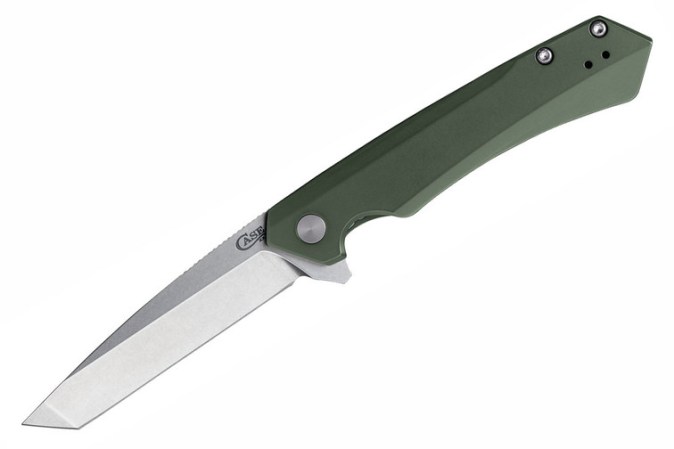We may earn revenue from the products available on this page and participate in affiliate programs.

Growing up, I remember that all the old-timers carried Case knives — period. There was not a single Gerber, Kershaw, or Benchmade to be found. When my old New England neighbors needed to cut a fishing line, they used a Case. When my aunts and uncles out west were working calves in the spring, they used a Case. My college buddies in Oklahoma carried all kinds of folding knives, but you can bet that a Case was the crown jewel of their collection and it’s what they brought to church on Sundays.
Somewhere along the way, though, Case knives fell to the wayside in popularity. They developed a reputation for being — there’s no other way to say it — old peoples’ knives. None of my Marines carried bone-handled pocket knives with a tiny little thumbnail nick to get the blade open. No, we all carried slick tactical knives that could open with one hand, spring-assisted or not. In the latter years of the Global War on Terror, it seemed like everyone preferred knives like the Gerber 06 or Ka-Bar Mule. Case knives were relics of the past.
Not surprisingly, the folks at Case don’t seem pleased with this cultural shift, and the company appears to be looking for an entry into the lucrative EDC market. The result of that search is a pair of modern folding knives that open with one hand and didn’t look like they belonged in a spaghetti western. The Marilla and original Kinzua were big steps in the right direction, but something was missing. They functioned well and upheld Case’s reputation for quality, but something about the bright red and blue anodized handles didn’t sit well with the tactical crowd.
Now, Case is making things right with an update that launches the Kinzua toward the top of my EDC wish list. Here’s why it might just end up at the top of yours.
Case Kinzua
What’s new with the Case Kinzua
What a difference color can make. New for the summer of 2023 is a Kinzua with an aluminum handle anodized in olive drab green. The dark green hue and slightly muted finish are just subtle enough to make sense in the field. The satin-finished blade isn’t as stealthy as the blacked-out tactical knives out there, but that makes it better suited to EDC duty in my book.
The other change for 2022 is the option to get your OD green Kinzua with either the same straight edge and tanto point as before or a drop point.

What’s the same with the Case Kinzua
Are these new EDC knives still made in the U.S.? Damn right. Case still builds its knives in Bradford, Pennsylvania.
Aside from the color and new blade option, the Kinzua remains unchanged. The all-metal construction begins with a hefty handle made from anodized aluminum. The frame lock is rock-solid and the opening action is buttery smooth with a positive click into place. I’d go so far as to say this is my favorite action of any folding knife in terms of feel. That’s subjective and you may disagree; but it’s not too light, not too heavy, perfectly slick right out of the box, and the blade locks in place with a sound so satisfying that I find myself repeatedly opening and closing this knife just to hear it.

One of my colleagues compared the Kinzua’s action to an AR bolt locking in place. I agree, but feel like I should specify that he meant a clean, well-oiled one. This does not sound like a 20-year-old M4 with a trillion rounds through it, sand chewing away at the bolt carrier group, and no lube unless you count the tobacco spit you accidentally drooled into it when you fell asleep on watch.
Moving on to the blade, Kinzua uses damn good steel and plenty of it. The S35VN steel is preferred by many manufacturers (including Spyderco and Benchmade) and consumers for its unique balance of toughness, hardness, edge retention, and corrosion resistance. Hardcore blade connoisseurs will have more nuanced preferences, but most people will be more than happy with the way S35VN holds up to use, abuse, and maintenance.
The blade is very thick, measuring 5/32 of an inch by my eye. The flat grind continues the S35VN’s theme of versatility. It’s tapered enough for most slicing work but keeps a beefy spine for added strength and about two inches of jimping for extra grip and precision. I’ve heard some complaints of Case knives having slightly burred edges, but my test knife doesn’t have that problem. It would be disappointing to spend more than $100 on a blade that needs attention right out of the box, although it would be an easy fix and a good excuse to pick up a leather strop.
If there are any criticisms to be made of this steel, they’re cost and ease of sharpening. To be fair, this is high-end steel that doesn’t cost as much as other premium options like M390 and S90V. It can take some effort to hone a fine edge, but edge retention is good enough that you shouldn’t have to lay the Kinzua on a whetstone very often.
What’s in it for you
As Task & Purpose gear testers, we get our hands on a lot of knives. Sometimes we recommend a knife because it’s incredibly focused on one niche purpose, like the Spyderco Atlantic Salt. Others, like the SOG Instinct, get recognized for being an affordable entry into the world of knives. The Case Kinzua isn’t elite in any one aspect, but it’s great at everything.
Would I carry the Kinzua in the field or trust one on deployment? Yes. I’d also take it hiking, hunting, fishing, or to the front door to slay Amazon boxes. It’s a premium knife that doesn’t need to be babied and asks for almost no maintenance, thanks to the anodized aluminum handle. I hope some of the old-timers give this knife a chance, too, because it’s going to blow their minds.
Verdict
The Case Kinzua is an awesome EDC knife that upholds the brand’s reputation for quality and blazes a new path into the modern knife market. It might be a little outside the company’s wheelhouse, but Case knocked it out of the park.

FAQs about the Case Kinzua
You have questions, Task & Purpose has answers.
Q: How much does the Case Kinzua cost?
A: The Case Kinzua costs $115.99 at SMKW at the time of writing.
Q: Are Case knives made in the U.S.?
A: Yes, Case still makes its knives in Bradford, Pennsylvania.
Q: Do Case knives come with a lifetime warranty?
A: Yes, Case warranties its knives for the lifetime of the owner. Read the fine print of the warranty policy here.
